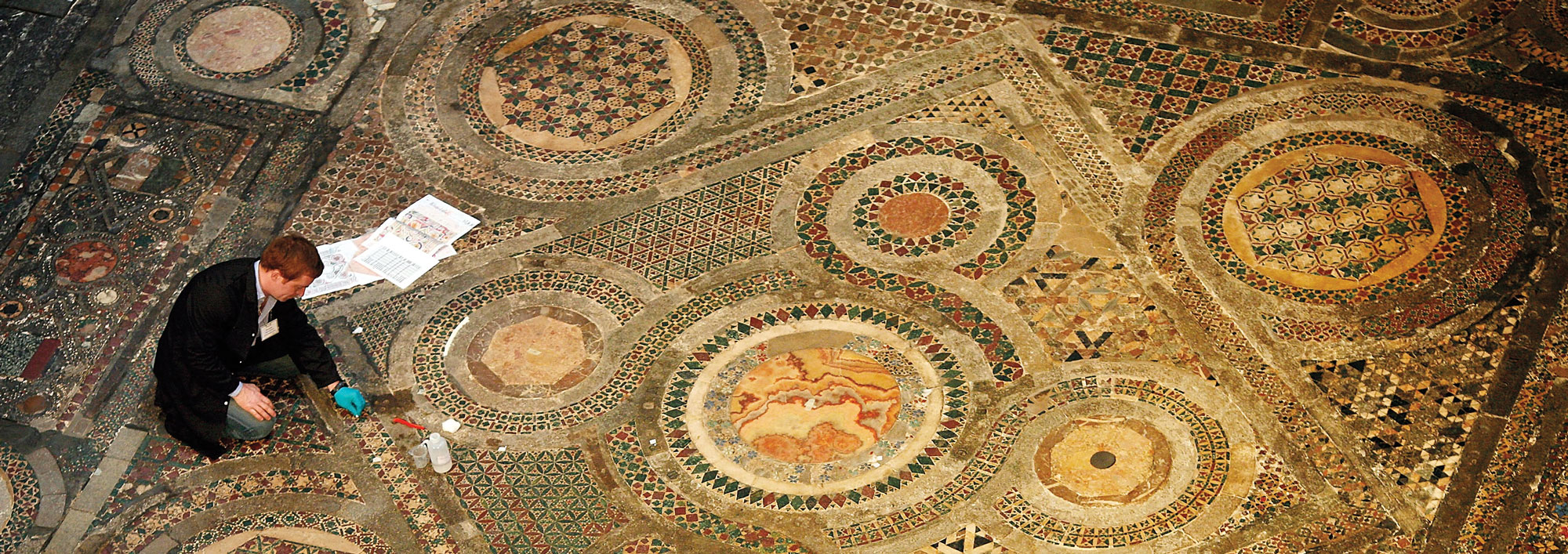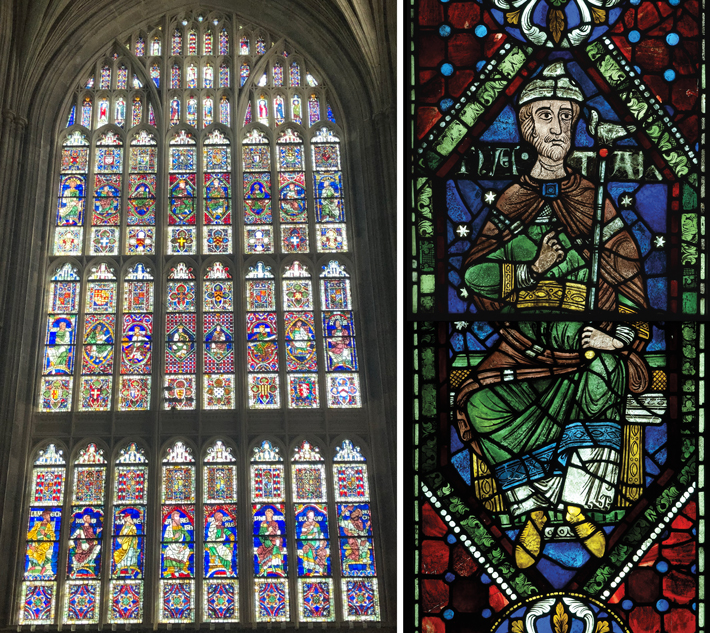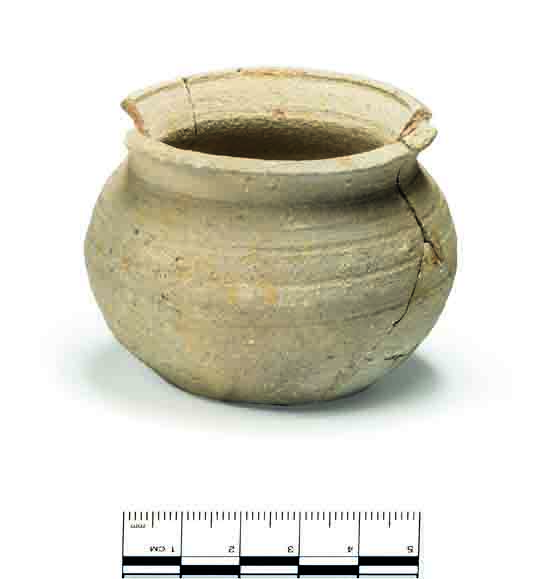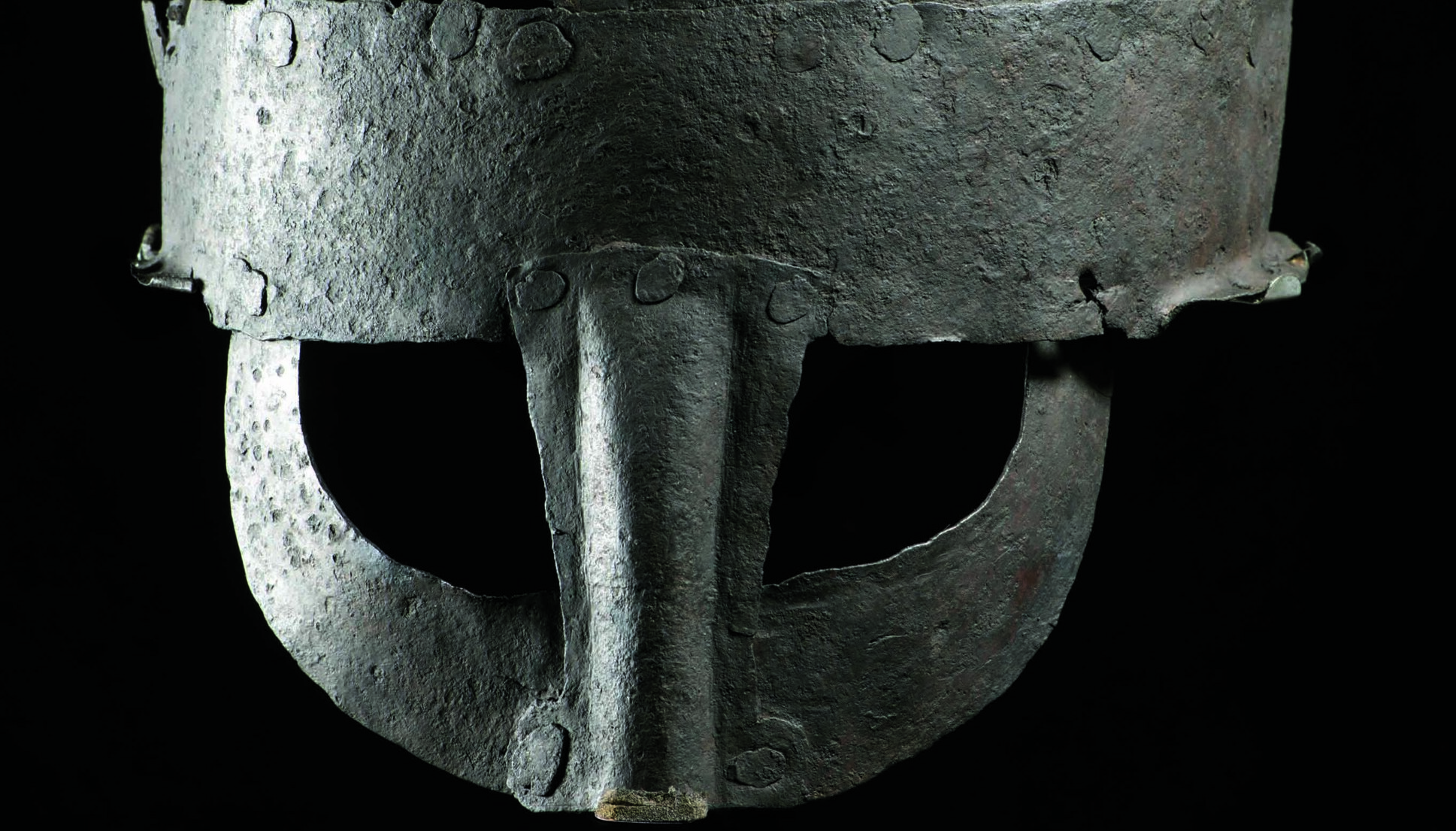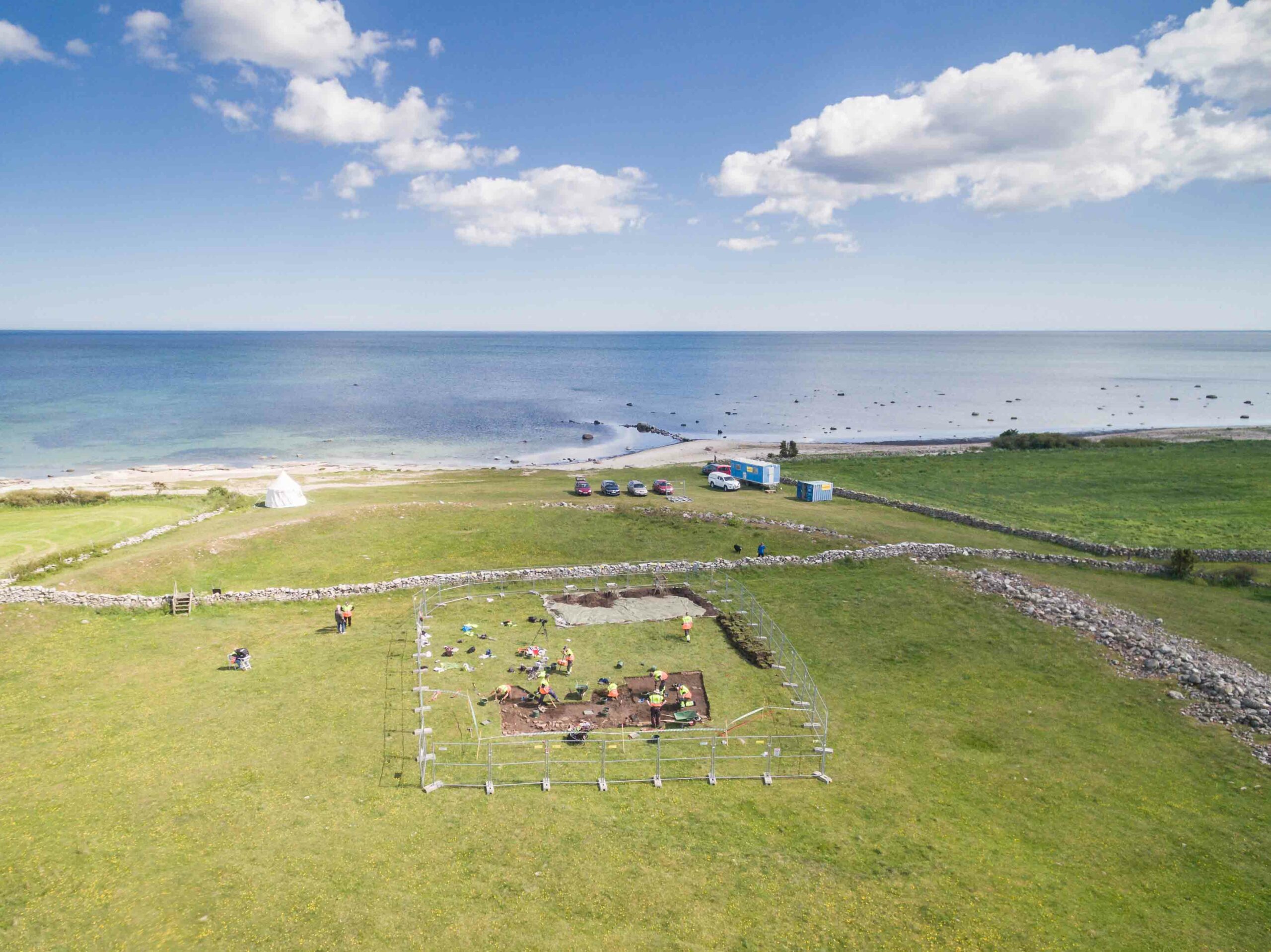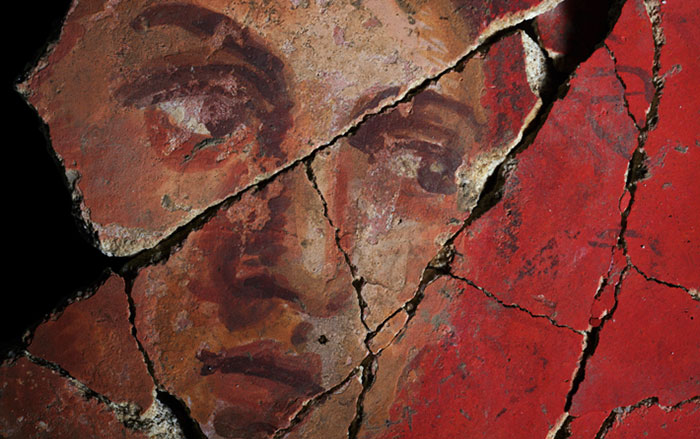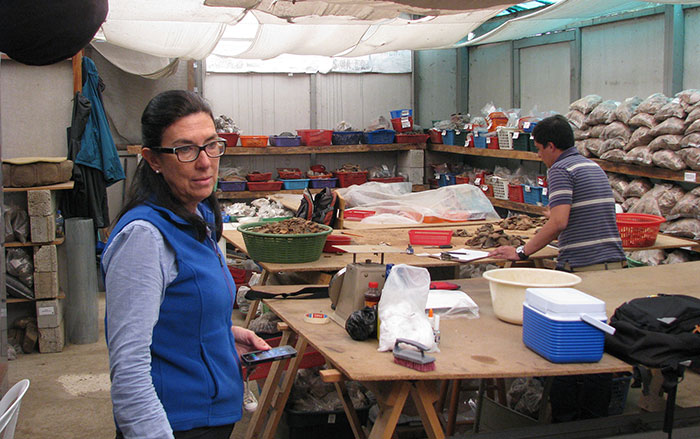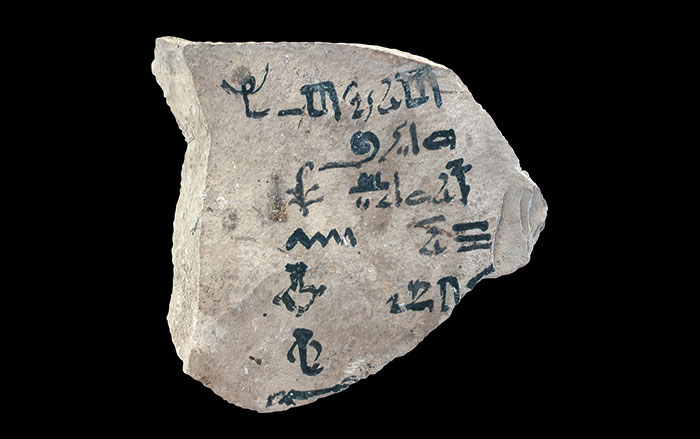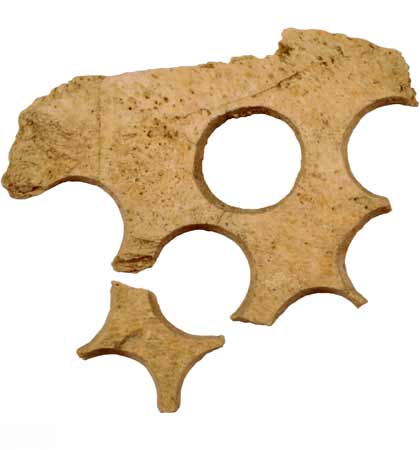
SUFFOLK, ENGLAND—Culture 24 reports that an archaeological investigation in Bury St. Edmunds, located near the southeast coast of England, has uncovered a building with a foundation made of flint and mortar that probably had timber walls and a tiled roof and floor. The building may have been a kitchen or cold storage area in the fourteenth and fifteenth centuries, perhaps placed at a distance from the houses in the core of the medieval market town to protect them from potential kitchen fires. The site also yielded pits where chalk was quarried between the twelfth and fourteenth centuries. (Lime for making mortar would have been extracted from the chalk.) The excavation team from Suffolk Archaeology found a gaming counter with wear marks suggesting it had been worn on a string, worked bone and antler waste, pottery, a chain, a spindle whorl, and roof tile fragments among the trash and food waste in the pits. To read more on medieval England, go to "Writing on the Church Wall."


